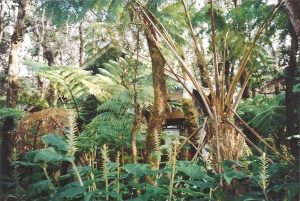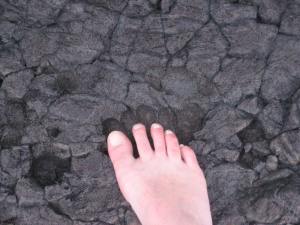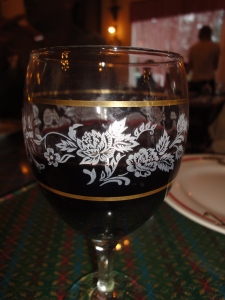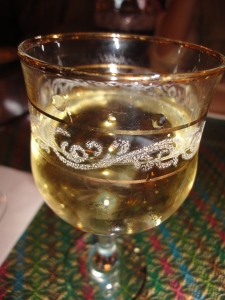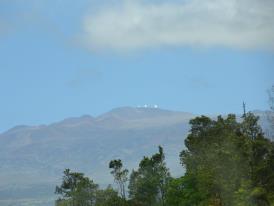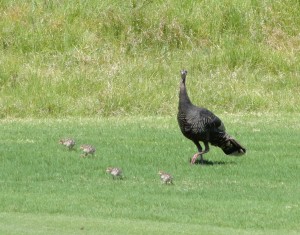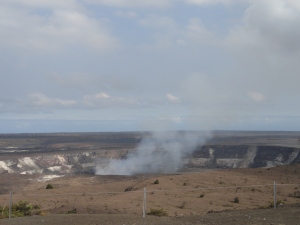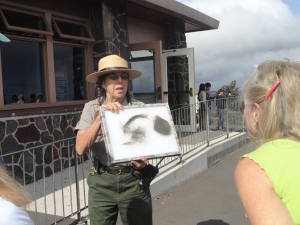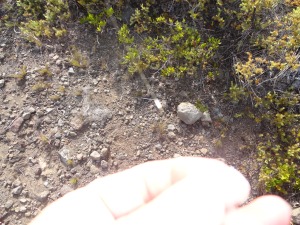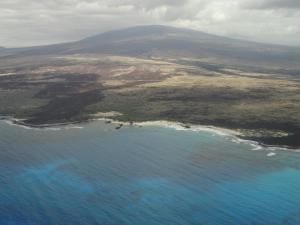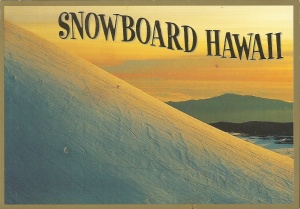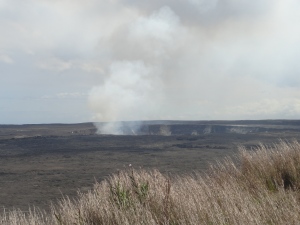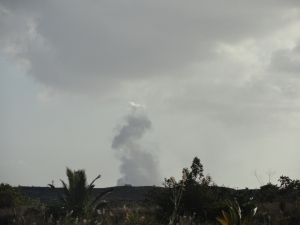 I missed seeing the Petroglyphs in Volcano National Park (we accidentally opted to take a scenic drive down an old road so it was too dark by the time we got to the Petroglyph Trail), BUT, fortunately, Chris & Amanda and the girls were up for hiking to the Petroglyphs along the Kohala Coast.
I missed seeing the Petroglyphs in Volcano National Park (we accidentally opted to take a scenic drive down an old road so it was too dark by the time we got to the Petroglyph Trail), BUT, fortunately, Chris & Amanda and the girls were up for hiking to the Petroglyphs along the Kohala Coast.
The Petroglyph Trail is beside the King’s Shops, and apparently, there’s a free tour of the petroglyphs. We just walked around out there and made guesses about what everything was (there are occasional signs, too, to help with your guesses), but it might be handy to have an expert on hand…
The King’s Shops are located in Waikoloa Beach Resort, and include high fashion stores (Louis Vuitton, for example), restaurants, and gift shops. Across the street is The Queen’s MarketPlace, which includes, along with the fashion stores (Quicksilver and Sunglass Hut, for example) and restaurants, the Island Gourmet Marketplace, which includes gifts, groceries and wine tasting. (There’s also a large coy pond, at which to wile away the hours, if that interests you – I stayed there while Peter went watch-shopping.)
 Between the Kings and Queens shops is the Petroglyph Trail (or Ki’i pohaku, which means something like “Stone Image”.)
Between the Kings and Queens shops is the Petroglyph Trail (or Ki’i pohaku, which means something like “Stone Image”.)
The majority of Petroglyphs were carved into the lava stone sometime between the Hawaiian people’s arrival on the Island (obviously) and the late 1700′s (the sign on the pathway says between 1400 and 1800). Since then, there’s been an occasional addition – some of it is still considered petroglyphs, just newer, but I’m certain that the Smiley Face is just vandalism by some… idiot…
The walk down the trail is as long as you want it to be, really, I think. You can spend a few minutes or hours, but take water – there’s no shade at ALL!
 Also at the Waikoloa Resort is the Waikoloa Beach Marriott Resort & Spa and the Hilton Waikoloa Village. I’ve never spent any time at the Marriott there, but you could actually spend an entire trip at the Hilton, I think. (Time and entertainment-wise, anyway. I can’t speak for your budget…heh… maybe just Google it. But, they have a lake in the middle for boating (non motorized), Dolphin Quest, a luau, restaurants – and all this just 20 minutes from the Kona International Airport.)
Also at the Waikoloa Resort is the Waikoloa Beach Marriott Resort & Spa and the Hilton Waikoloa Village. I’ve never spent any time at the Marriott there, but you could actually spend an entire trip at the Hilton, I think. (Time and entertainment-wise, anyway. I can’t speak for your budget…heh… maybe just Google it. But, they have a lake in the middle for boating (non motorized), Dolphin Quest, a luau, restaurants – and all this just 20 minutes from the Kona International Airport.)
Just 11 minutes from the Airport is Ocean Rider Seahorse Farm.
 ~ see baby seahorses (which you can almost not see- but if you look very close, you can see their tiny little tails curling while they swim)
~ see baby seahorses (which you can almost not see- but if you look very close, you can see their tiny little tails curling while they swim)~ sample some super salty seahorse food (veggies grown in salt water, not the microscopic shrimp - blecht)
~ see some pregnant seahorse dads (Yes, it’s true – although the mom deposits the baby egg(s) into the dad’s pouch, and he carries them (maybe 1000′s of them !!!) for up to 25 days!! The eggs actually hatch in the dad’s pouch, and he carries the babies until they are ready to be out on their own. According to National Geographic, fewer than 5 of every 1000 survive, which is one reason for their decreasing population. (Also, the same article explains that, although the spiny plates on the seahorse make it difficult for other animals to eat, it’s survival is still threatened by humans, who hunt the seahorse for traditional medicinal usage…)
 The Ocean Rider’s website reveals that “According to research done by Project Seahorse the current world consumption for the medicine market alone is estimated to be over 20 million individuals per year and increasing at rate of over 10% per annum and there has been a 50% decline in the world seahorse population from 1990 to 1995, and 70% since 1980.”
The Ocean Rider’s website reveals that “According to research done by Project Seahorse the current world consumption for the medicine market alone is estimated to be over 20 million individuals per year and increasing at rate of over 10% per annum and there has been a 50% decline in the world seahorse population from 1990 to 1995, and 70% since 1980.”
Another cause of the declining population is that the poor little wild seahorses are not acclimatized to living in fish tanks, and many people want to include them in their scenery. Not only are they not acclimatized, but they don’t get proper food, so they die.
 So, places like Ocean Rider, Inc., are studying seahorses and ways to preserve them, especially for domesticated pets. They have successfully rebred seahorses in captivity, and provide education and food for people who feel they must have seahorses as pets.
So, places like Ocean Rider, Inc., are studying seahorses and ways to preserve them, especially for domesticated pets. They have successfully rebred seahorses in captivity, and provide education and food for people who feel they must have seahorses as pets.
The experts at Ocean Rider have also figured out a “work around” when dealing with the fact that seahorses are monogamous, and what happens when one member of the happy couple dies… But, I don’t want to give it all away, and I also don’t want to get the details wrong, so you will just have to go on the tour yourself.
Two more reasons to go: 1) they also have Sea Dragons at which you can take a peek (no pictures – they are not yet successfully domesticated) and 2) at the end of the tour, you get to hold one of the seahorses!! (Or, rather, as they clarified, “the seahorse holds you”. You make your hands like a coral basket and the little seahorse wraps it’s tail around your finger and holds on. AMAZING!!!)

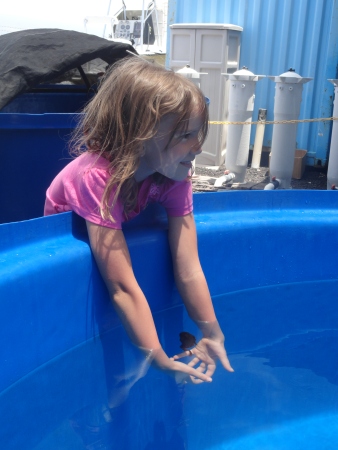
Next week, Kailua-Kona.





